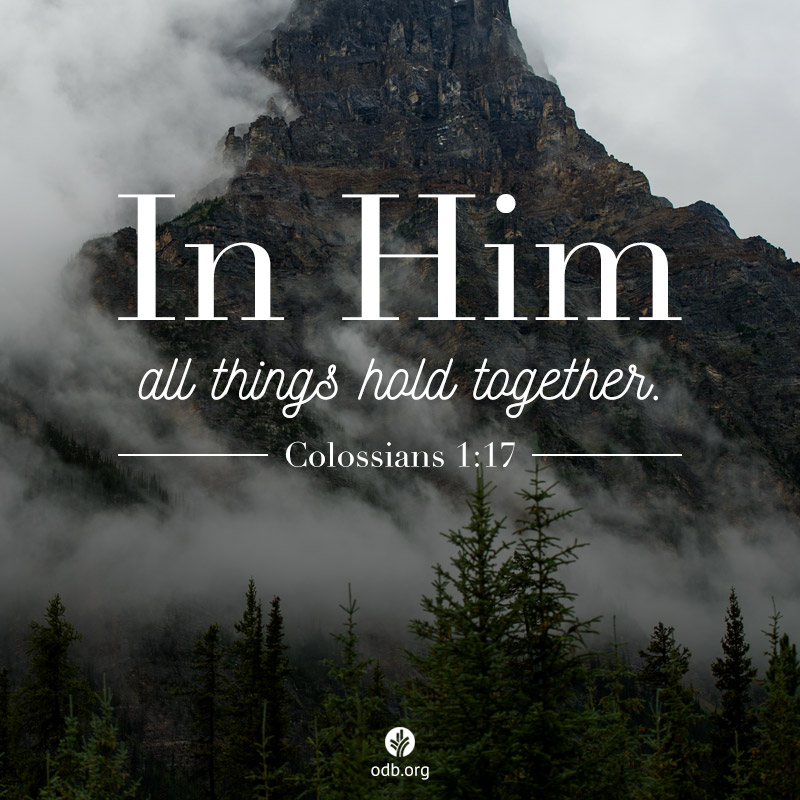
The Talking Tree
One of the earliest Christian poems in English literature is “The Dream of the Rood.” The word rood comes from the Old English word rod or pole and refers to the cross on which Christ was crucified. In this ancient poem the crucifixion story is retold from the perspective of the cross. When the tree learns that it is to be used to kill the Son of God, it rejects the idea of being used in this way. But Christ enlists the help of the tree to provide redemption for all who will believe.
In the garden of Eden, a tree was the source of the forbidden fruit that our spiritual parents tasted, causing sin to enter the human race. And when the Son of God shed His blood as the ultimate sacrifice for all of humanity’s sin, He was nailed to a tree on our behalf. Christ “bore our sins in his body on the cross” (1 Peter 2:24).
The cross is the turning point for all who trust Christ for salvation. And ever since the crucifixion, it has become a remarkable symbol that represents the sacrificial death of the Son of God for our deliverance from sin and death. The cross is the inexpressibly wonderful evidence of God’s love for us.
What Every Mom Needs
When we grasp the spiritual reality that while we are adults called to care for our children, we are still children with access to heavenly help; we are empowered to be better moms.

Rebuilding
When Edward Klee returned to Berlin after being away for many years, the city he remembered and loved was no longer there. It had changed dramatically, and so had he. Writing in Hemispheres magazine, Klee said, “Returning to a city you once loved tends to be a hit-or-miss proposition . . . . It can be a letdown.” Going back to the places of our past may produce a feeling of sorrow and loss. We are not the same person we were then, nor is the place that was so significant in our lives exactly as it was.
Nehemiah had been in exile from the land of Israel for many years when he learned of the desperate plight of his people and the devastation in the city of Jerusalem. He received permission from Artaxerxes, the Persian king, to return and rebuild the walls. After a night reconnaissance to examine the situation (Neh. 2:13–15), Nehemiah told the inhabitants of the city, “You see the trouble we are in: Jerusalem lies in ruins, and its gates have been burned with fire. Come, let us rebuild the wall of Jerusalem, and we will no longer be in disgrace” (v. 17).
Nehemiah did not return to reminisce but to rebuild. It’s a powerful lesson for us as we consider the damaged parts of our past that need repair. It is our faith in Christ and His power that enables us to look ahead, move forward, and rebuild.

Timeless Savior
Jeralean Talley died in June 2015 as the world’s oldest living person—116 years of age. In 1995, the city of Jerusalem celebrated its 3,000th birthday. One hundred sixteen is old for a person, and 3,000 is old for a city, but there are trees that grow even older. A bristlecone pine in California’s White Mountains has been determined to be older than 4,800 years. That precedes the patriarch Abraham by 800 years!
Jesus, when challenged by the Jewish religious leaders about His identity, also claimed to pre-date Abraham. “Very truly I tell you,” He said, “before Abraham was born, I am” (John 8:58). His bold assertion shocked those who were confronting Him, and they sought to stone Him. They knew He wasn’t referring to a chronological age but was actually claiming to be eternal by taking the ancient name of God, “I am” (see Ex. 3:14). But as a member of the triune Godhead, He could make that claim legitimately.
In John 17:3, Jesus prayed, “This is eternal life: that they know you, the only true God, and Jesus Christ, whom you have sent.” The timeless One entered into time so we could live forever. He accomplished that mission by dying in our place and rising again. Because of His sacrifice, we anticipate a future not bound by time, where we will spend eternity with Him. He is the timeless one.

Always Loved, Always Valued
We serve a God who loves us more than our labors.
Oh, it’s true that God wants us to work to feed our families and to responsibly take care of the world He created. And He expects us to serve the weak, hungry, naked, thirsty, and broken people around us even as we remain alert to those who have not yet responded to the Holy Spirit's tug on their lives.
And yet we serve a God who loves us more than our labors.
We must never forget this because there may come a time when our ability to “do for God” is torn from us by health or failure or unforeseen catastrophe. It is in those hours that God wants us to remember that He loves us not for what we do for Him but because of who we are: His children! Once we call on the name of Christ for salvation, nothing—“trouble or hardship or persecution or famine or nakedness or danger of sword”—will ever again separate us “from the love of God that is in Christ Jesus our Lord” (Rom. 8:35, 39).
When all we can do or all we have is taken from us, then all He wants us to do is rest in our identity in Him.
